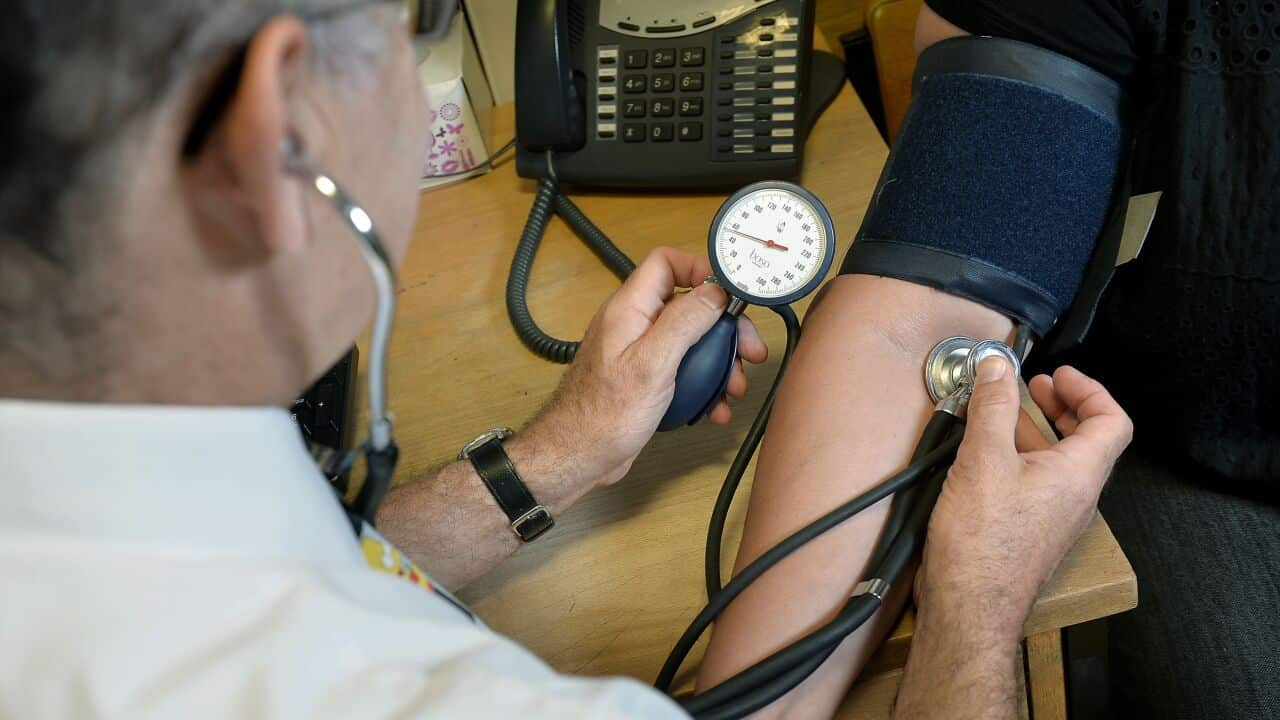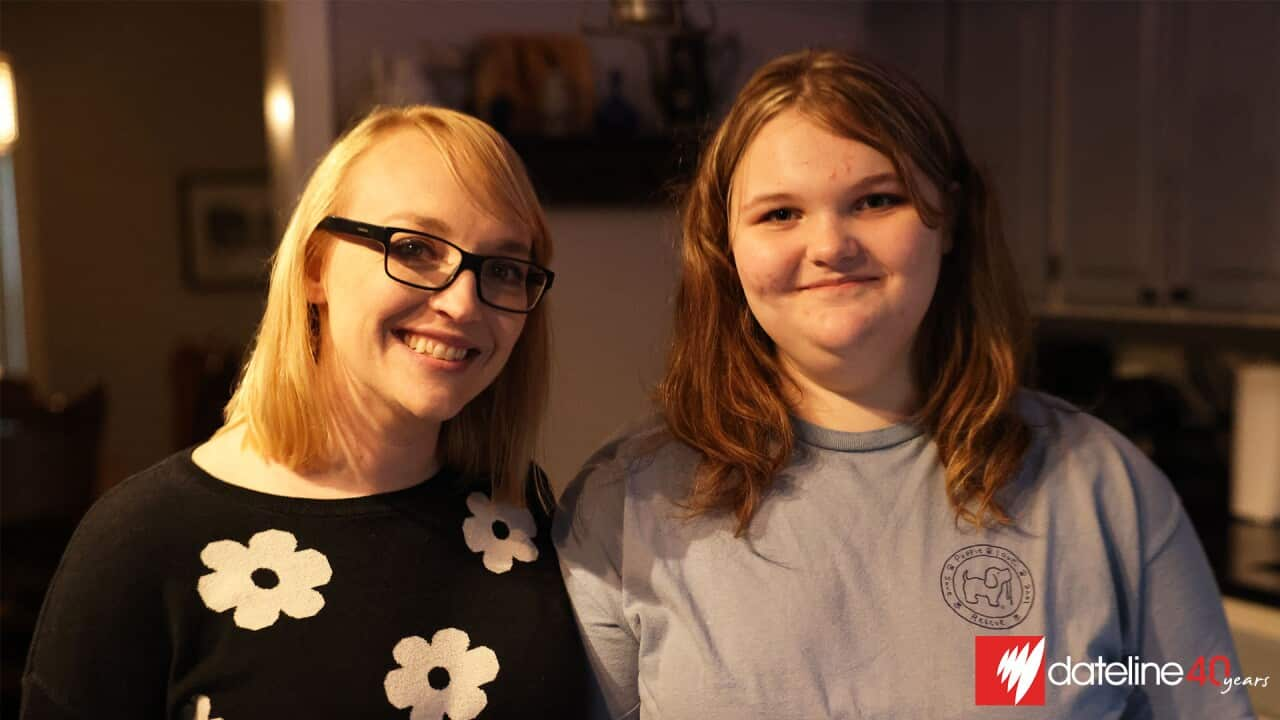This article contains references to eating disorders.
Queensland-based Sarah Cox recalls that in 2018, her doctor advised her to lose weight because her body mass index (BMI) was too high, despite her feeling healthy and experiencing no physical health issues.
Now 35, Cox said the advice triggered an eating disorder that lasted two-and-a-half years.
She said at the time, the doctor did not carry out blood tests or other health screenings but instead prescribed weight loss medication and referred her to an exercise physiologist and dietitian.

Sarah Cox said her doctor recommended she lose weight because her BMI was too high. Source: Supplied
"Their plan, which was done purely to reduce my BMI, is what made me unhealthy, is what made me sick, and is what started two-and-a-half years of hospitalisations and almost losing my life."
Obesity definition and diagnosis 'too reliant on BMI'
BMI is a diagnostic tool that has been used for the past 50 years to estimate a person's body fat.
The simple formula takes a person's weight in kilograms and divides it by the square of their height in metres.
But experts say it's far more complex.
Professor Wendy Brown, chair of the Department of Surgery at Monash University, told SBS News it's a good measure, but it's very limited "because it doesn't account for what the weight is made up of, and also where the weight is carried".
A person with a BMI over 30 is considered to be 'obese', which is typically deemed unhealthy.
"So if you are an athlete and you weigh a hundred kgs and you are solid muscle, your BMI might flick up to 30, but you're obviously a really healthy person because you're lean and you're fit and you're active," she said.
"But if your BMI is 30 and that's largely made up of fat, particularly if that fat's carried around the central area or around your heart, then that becomes an unhealthy situation.
"So the old measure where we just looked at your height and your weight and didn't consider what was making up that weight and where it was carried. It's not nuanced enough to help us know who we need to be helping to lose weight."
Brown is a member of the global commission on clinical obesity, which is proposing a major overhaul of obesity diagnosis.
The commission published a report in The Lancet Diabetes & Endocrinology journal on Wednesday, endorsed by 75 medical organisations globally, which says current approaches are too reliant on BMI.
"What [the commission] is proposing is that we continue to measure the BMI, but we supplement that with measurements that will help us understand where weight is being carried," she said.
"There are also some other tests we can do — x-rays and also body composition measures — that will tell us exactly how much fat a person has, but those tests are a little more expensive and not necessarily accessible to everyone in the community."
'Not fit for purpose'
Dr Fiona Willer, a lecturer in nutrition and dietetics at Queensland University of Technology, believes it's time to ditch the BMI altogether.
"It's a terrible tool. [It's] not fit for purpose," she told SBS News.
"It was developed by a mathematician hundreds of years ago [as a way] to standardise human bodies. And of course, we know that people come in lots of different shapes and sizes, and it's really hard to get a handle on how to compare one person with another using those measurements alone."

Dr Fiona Willer believes the BMI is 'not fit for purpose'. Source: Supplied / Tony Phillips/ Queensland University of Technology
The BMI was initially based on a study set of European men.
"Of course, not everyone is a thin white male, wasn't then and isn't now," she said.
"There has been an attempt to try to adjust for people's different genetic and ethnic backgrounds. [For example] smaller framed populations have lower cutoff points.
"The cutoff points themselves, I should add, though, are essentially pretty arbitrary. They tend to be round numbers for ease, but bodies aren't made with round numbers in mind in terms of health risks. So there're flaws in using the BMI overall."
Willer said the BMI is problematic for people across the weight spectrum.
"We've got this kind of cultural assumption that you look like what you eat and that if you eat a certain way, your body will end up looking a certain way."
Varsha Yajman said it took her three years to receive a diagnosis for an eating disorder, which started when she was 14, due to what she describes as a fixation on her BMI.
"My weight kept dropping, but the whole idea was, 'Oh, just eat more and exercise less, and you'll be fine'. There was no acknowledgement of the mental side of things," the 22-year-old said.
"And then when it came to my BMI, it was 'Oh, well, it's not severely low. That's okay'. Or 'You're still within the range'. And then when it was out of the range, 'It's not too bad still'.
"So I kept coming into the question of how bad do I need to be? Or how sick do I need to be to actually have an eating disorder to actually get help?"

Varsha Yajman said it took her three years to receive a diagnosis of an eating disorder due to a fixation on her BMI. Source: Supplied
New categories for obesity
As part of the shake-up, the commission is proposing two categories for obesity to ensure people receive appropriate health advice and evidence-based care.
The proposed categories are pre-clinical obesity and clinical obesity.
Clinical obesity is defined as a condition where obesity is linked to noticeable signs or symptoms of reduced organ function, or a significant decline in the ability to perform daily activities.
Whereas pre-clinical obesity is defined as a condition of obesity where a person has normal organ function and no ongoing illness.
Willer is concerned these new definitions could "further muddy the waters".
"I think all Australians, regardless of what their body size is, should be able to get good healthcare … their body size may be part of the planning for that, but it shouldn't actually be the target of any treatment they need."
She's worried it could contribute to what she describes as "over pathologising" based on weight, saying it adds yet another medical label.
However, 56-year-old Lexii Marquardt, who is considered obese based on her BMI, believes the commission's proposal to split obesity into two categories is "a great step forward".
"Pre-clinical obesity makes a whole lot of sense for people like me. It's like, yes, you are living in a larger body. However, it's not impacting you," she said.
Marquardt said she played competitive tennis for 40 years, and despite being considered at risk of certain diseases, she's in good health.
Yes, my body is of a certain size, but it hasn't impacted my capacity or my health and well-being other than, sadly, my mental health.Lexii Marquardt
"[I've been told] you're likely to see pre-diabetes, diabetes, chronic cardiovascular issues, sedentary lifestyle," she said.
"I have no cardiovascular issues. My cholesterol readings are great. My blood pressure is great. All of those risk indicators that get checked every year; it kind of astounds my general practitioners and others.
"Yes, my body is of a certain size, but it hasn't impacted my capacity or my health and well-being other than, sadly, my mental health."
Professor Tim Gill, executive director of the peak body for obesity, The Obesity Collective, said the new diagnostic criteria is a "major step forward".
"These new criteria will not only help avoid the misclassification of otherwise healthy people living in a larger body as obese but will also help better target the limited healthcare resources and services to those individuals most in need of immediate care."
But he said to be truly effective, the new definitions will require a greater investment of time and resources by health professionals.
Readers seeking support for eating disorders or body image concerns can call the Butterfly National Helpline on 1800 ED HOPE (1800 33 4673) or visit www.butterfly.org.au



